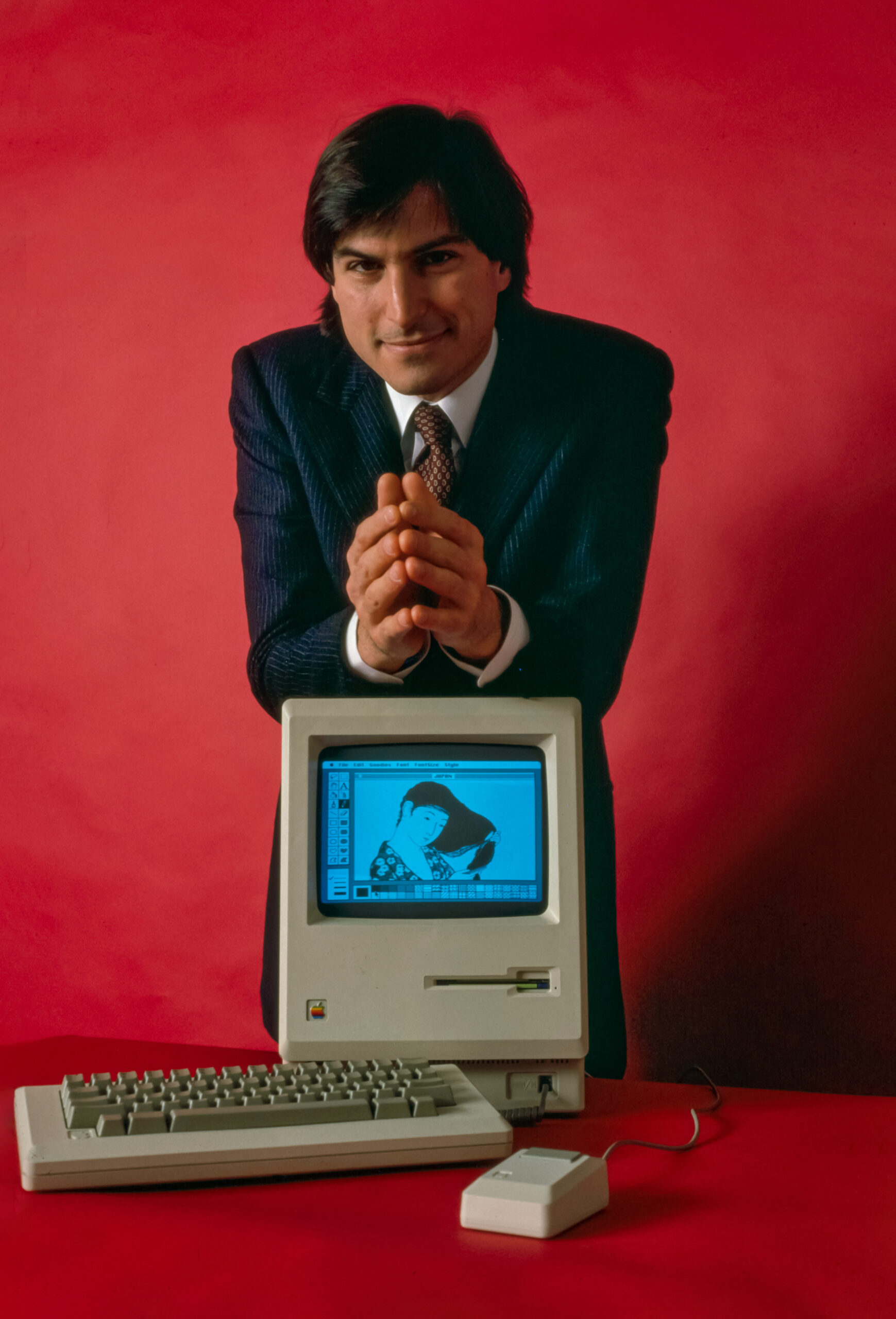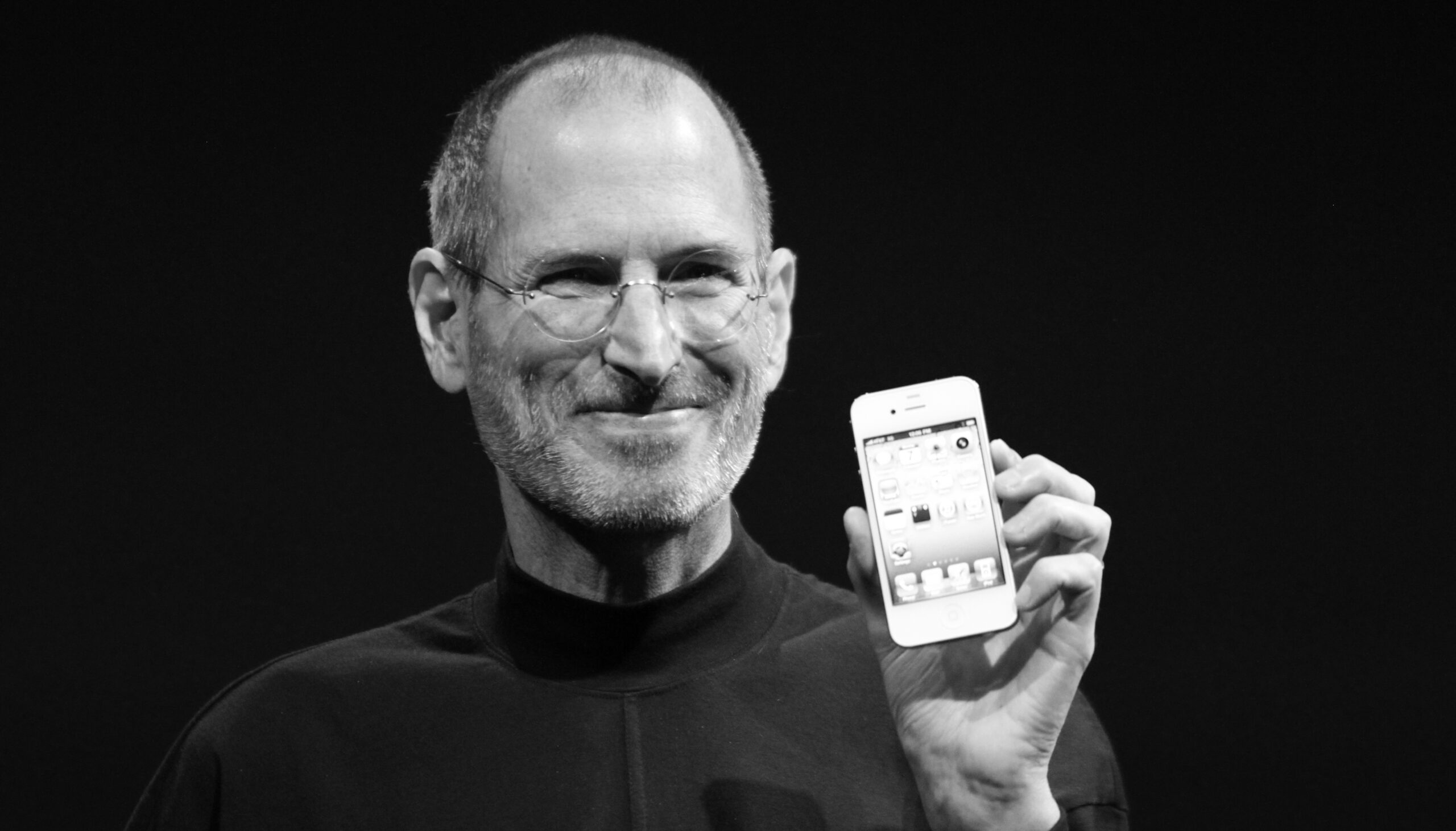On February 24, 1955, in San Francisco, a baby boy was born to two young parents who could not raise him. He was adopted by Paul and Clara Jobs, a working-class couple who promised to give him a good home. They named him Steven Paul Jobs.
Jobs grew up in Cupertino, California — a quiet suburb that would one day become the heart of Silicon Valley. As a boy, he loved tinkering in the garage with his father, learning how to take apart machines and put them back together.
“A lot of people in our industry haven’t had very diverse experiences. That’s not good. The broader one’s understanding of the human experience, the better design we will have.”
A College Dropout with Big Dreams
Jobs enrolled at Reed College in Oregon but soon dropped out, drifting between classes that fascinated him. He slept on floors, collected bottles for food money, and studied calligraphy simply because it was beautiful.
Years later, he would credit that calligraphy class for inspiring the fonts on the first Macintosh computer.
“You can’t connect the dots looking forward; you can only connect them looking backward.”
Apple is Born
In 1976, Jobs and his friend Steve Wozniak built the first Apple computer in the Jobs family garage. They sold 50 units to a local shop, and Apple Computer was born.
Jobs had a gift for seeing not just what technology could do, but what it could mean. He wanted computers to be elegant, simple, tools of creativity rather than machines for specialists.
The Apple II became a hit. Then, in 1984, Jobs introduced the Macintosh with its now-famous commercial:
“1984 won’t be like 1984.”
“Design is not just what it looks like and feels like. Design is how it works.”
The Fall from Grace
But Jobs’s intensity often clashed with colleagues and board members. In 1985, at just 30 years old, he was forced out of Apple, the company he had founded.
Devastated but undeterred, he founded NeXT, building high-end computers for education, and bought a small animation studio from George Lucas — a company that would later become Pixar.
“Sometimes life is going to hit you in the head with a brick. Don’t lose faith.”
The Return of the Visionary
In 1997, Apple, on the brink of collapse, brought Jobs back. What followed was one of the greatest comebacks in business history.
Jobs streamlined Apple’s products and launched a revolution: the iMac, the iPod, the iTunes Store, the iPhone, and the iPad. These weren’t just devices — they reshaped music, communication, entertainment, and design itself.
“Innovation distinguishes between a leader and a follower.”
The Showman
Jobs turned product launches into theatre. In his black turtleneck and jeans, he walked onto stage not just to sell, but to enchant.
His famous line — “One more thing…” — became a moment of collective anticipation.
“People don’t know what they want until you show it to them.”
The Final Act
In 2003, Jobs was diagnosed with a rare form of pancreatic cancer. For years, he battled the disease while continuing to lead Apple. On October 5, 2011, he passed away at the age of 56.
His Stanford commencement speech from 2005, given when he was already ill, became a distillation of his life’s philosophy:
“Your time is limited, so don’t waste it living someone else’s life. Stay hungry. Stay foolish.”
The Legacy of Steve Jobs
Steve Jobs was not an engineer in the traditional sense, nor always an easy man to work with. But he was a visionary who believed technology should serve beauty, simplicity, and the human spirit.
From the garage to the global stage, he left the world not just with gadgets, but with a way of thinking: bold, creative, restless, and endlessly curious.
“The people who are crazy enough to think they can change the world are the ones who do.”

Jobs said the following in a 1994 interview with the Santa Clara Valley Historical Association:
“When you grow up you tend to get told the world is the way it is and your job is just to live your life inside the world. Try not to bash into the walls too much. Try to have a nice family life, have fun, save a little money.
That’s a very limited life. Life can be much broader once you discover one simple fact, and that is – everything around you that you call life, was made up by people that were no smarter than you. And you can change it, you can influence it, you can build your own things that other people can use.
The minute that you understand that you can poke life and actually something will, you know if you push in, something will pop out the other side, that you can change it, you can mold it. That’s maybe the most important thing. It’s to shake off this erroneous notion that life is there and you’re just gonna live in it, versus embrace it, change it, improve it, make your mark upon it.
I think that’s very important and however you learn that, once you learn it, you’ll want to change life and make it better, cause it’s kind of messed up, in a lot of ways. Once you learn that, you’ll never be the same again.”
